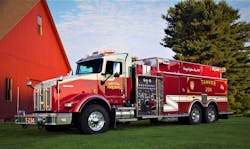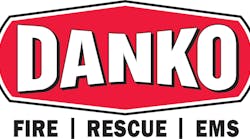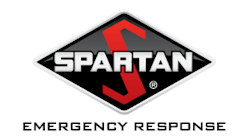Tanker-Tenders Are Workhorses of Fire Service
While the mission of a tanker, or tender, has always been a support role (hauling water for fire suppression) its role in the fire service is expanding as money and personnel tighten. Tanker-tenders are now called upon to serve as attack apparatus, even wildland apparatus and sometimes for water purification during disaster relief efforts.
“Tankers are the workhorse of the fire service,” said Craig Brooks, general manager for US Tanker, a division of Spartan Emergency Response. “They are often going to be around two or three times longer than any other apparatus.”
Firehouse spoke with several tanker experts to learn about trends in the industry and how firefighters should write tanker specs for their department. Firehouse also spoke with representatives from Danko Emergency Equipment and Water Master, a division of E-ONE, which is part of the REV Group.
Brooks, an engineer by trade, has been in the fire service business since 1988 and worked for a few fire apparatus manufacturers before moving to Spartan.
“We are seeing more pumper-tankers rather than just water-haulers,” Brooks said, adding that a reduction in the number of volunteers serving has precipitated the rise in popularity of pumper-tankers. “As our volunteers continue to spend more time in the workforce, we continue to see more pumper-tanker combos.”
Dual-purpose apparatus
Dave Knobbe, sales manager for Danko, said he, too, has seen a trend in pumper-tanker vehicles serving as dual-purpose vehicles.
“They’re combining trucks for cost-savings, so they don’t have to buy a tanker and a pumper,” Knobbe said, adding that many departments are buying all-wheel drive tankers with commercial cabs and chassis and having them also serve as wildland apparatus. “They put bumper monitors on them and ground sweeps and send them out to fight wildland fires. Tankers are doing more than ever before.”
For Reggie Ridgway, product manager for E-ONE’s Water Master tanker product line, the trend toward doing more with less has always been on his mind.
Ridgway is the inventor and founder of the Water Master tanker, a unique apparatus that uses a rotary vane air displacement pump to create a vacuum in a cylindrical tank for rapid filling. Reversing the pump also helps discharge the water in the tank faster than atmospheric pressure.
With 37 years in the fire service, including serving as fire chief in Lamar County, MS, Ridgway said he developed the Water Master concept in 1975. He said he noticed firefighters with petrochemical companies would send a single person and an 18-wheeler semi-truck tanker to a water source, and that firefighter would single-handedly fill the tank and return to the scene in short order. He wanted to know how that was done, thinking there could be an application for rural fire suppression.
That’s when he learned about the rotary vane pump and the method petrochemical companies used for their fire suppression needs.
“Nature abhors a vacuum,” Ridgway said, explaining the science behind the Water Master system. He said by creating a vacuum in the tanker’s tank, water rapidly fills the void as atmospheric pressure on the water body pushes water into the tank. The Water Master system works the same way a rotary vane pump primer does by displacing air in the pump for drafting from static sources.
“The whole process is very quick,” Ridgway said, noting the Water Master system can fill a 3,500-gallon tanker in just over three minutes and discharge it in about two minutes. And it’s done with a single vehicle rather than sending a pumper and personnel to a water source to fill up the second apparatus, the tanker, also staffed by at least one person.
Ridgway said Water Master builds tankers with capacities from 2,000 to 4,000 gallons with 3,500 gallons on tandem rear axles being the most popular.
Tips for specifying tankers
When it comes to deciding how big the tank needs to be on an apparatus, experts agree, there are several factors to consider before seeking bids.
Ridgway said the first thing fire departments need to do is check the bridges and roadways to make sure the apparatus size being specified can be accommodated.
“If the bridges and roads can’t handle it, there no reason to look for a huge tanker,” Ridgway said.
Brooks said the first thing to consider is the size of the tank.
“It’s a tanker we’re talking about, so first and foremost, you have to determine the size of the tank,” Brooks said. “Do you need a 1,500-gallon tanker, a 2,500-gallon tanker, or are we talking about a 3,000-gallon tanker?”
To determine the tank size, firefighters need to determine the fire flow, which is the amount of water needed to fight a fire, and then pick the size tank that will best fill the need, Brooks said.
Next, Brooks said firefighters should determine if a pump is required on the tanker, either for fire suppression or to help fill the tanks during shuttles. When determining the need for a pump and what size, he said firefighters need to consider whether the tank will be filled from a pressurized hydrant system or from a static water body, like a lake, stream or river, or dry hydrant.
If there will be a pump, firefighters need to determine if a PTO-driven pump is necessary, or if a pump with an auxiliary power supply is adequate, Brooks explained.
Tankers with a full mid-ship, split-shaft driven pump can serve as a backup pumper and can also give extra points for Insurance Services Organization (ISO) class rating points, Brooks said.
Cab/chassis considerations
Another consideration is the cab and chassis. Overall, most tankers are built on commercial cabs and chassis, like Freightliner, International, Peterbilt and Kenworth.
“We also have customers who buy custom cabs and chassis,” Brooks said, adding the ratio of commercial to custom cabs is 10 to one. “Customers want high quality and versatility at the lowest price, so that drives them into the commercial chassis.” Brooks added that because of the current market conditions, the wait time for commercial cabs and chassis and custom cabs are about the same at five to six months. There was a time when a commercial cab and chassis could be delivered in five to 12 weeks, he said.
Most commercial cabs are two-doors, but a few are built with four-door cabs.
“Four-door cabs are rare, but we do build them,” said Jeff Wegner, director of sales and marketing for Danko.
Wegner, who is the assistant fire chief with the Howells, NE, Volunteer Fire Department, said some departments that are looking to save money by combining a pumper and a tanker will go for a four-door cab and chassis, so they can carry additional personnel.
While Wegner’s department did not go with a four-door cab and chassis, it did go for a pumper-tanker when they decided to a fleet replacement.
“We’re replacing two apparatus and we’re replacing them with a pumper-tanker,” Wegner said, noting that decision gave the department the ISO points for a pumper as well.
Pump preferences
Mark Kreikemeir, president of Danko, said pumps of any size or variety are common.
“Rarely do we build a tanker with no pump,” Kreikemeir said. He said there are several specialty tankers, including flatbed units that work like wildland apparatus, built on Ford F550 cabs and chassis. Danko builds flatbed tankers built on 4 x 4 International or Freightliner cabs and chassis for wildland applications, with the ability to go into fields and ditches.
Kreikemeir said there are tankers that also have 1,250-gpm mid-ship pumps, dump valves and enough compartments to work as an attack engine.
Danko also has a feature they call a half-lay side kick, which is a pre-connected hose lay that is only half the size of a typical hose lay, Kreikemeir said, adding that Danko’s is mounted on a pull-out tray.
Wegner said Danko also has a proprietary dump valve swivel on the rear of the apparatus. Its rectangular shape makes its swing higher than the more common square dump valve shut. That’s important in tanker shuttle operations when heavy traffic at the portable tank creates ruts reducing clearance by a few inches, thus impeding the swing and reach of the dump valve chutes. The rectangular dump valve swivel is just one of the many innovations that seem to be trending with tankers lately.
Brooks from US Tanker said he’s noticed a lot more electronics being employed on tankers.
“Younger guys want the technology,” he said. “They’re used to it. It’s a lot more reliable today, too.”
Digital electric valves and tank level gauges are among the more high-tech items installed on apparatus today. Cabs and chassis are typically equipped with electronic stability control systems to keep the heavy apparatus upright on the road, no matter the driver’s ability to handle the rig, experts say.
Safe and clean
All three manufacturers interviewed said backup cameras are requested far more regularly than ever before, and Water Master has made them standard on its apparatus in the name of safety.
Brooks said customers seem to be moving to safety when specifying apparatus. They even are beginning to ask for clean cabs for tankers, something that is becoming ever more common in higher-cost pumper and aerial apparatus.
“Our firefighters are being exposed to a lot of carcinogens, and tanker buyers ought to be thinking about clean cabs, too,” Brooks said.
Unfortunately, the commercial cab builders are not currently offering clean cab styles at this point, but Brooks see it coming.
“When there’s enough demand, they’ll start making them,” Brooks said. “We want to keep our brothers and sisters safe, but what can we afford? Customers are going to spend more for a clean cab and the tanker buyers are going to start demanding them.”
And when it comes to clean, clean water is a vital component to life itself. That’s why Brooks said US Tanker has recently built full water-purification systems for communities, including selling seven systems to one customer in Canada. He said the system is built into the pump with firefighting capabilities on one side and purification capabilities on the other.
“With the ongoing disasters plaguing our world, we are seeing the need for potable water in ways that can serve thousands of people,” Brooks said. “Tankers are the perfect fit as they can haul many gallons to a community without water and turn it into pure drinking water on site.”
“We ask a lot of our tankers,” Brook said. “They truly are workhorses.”









